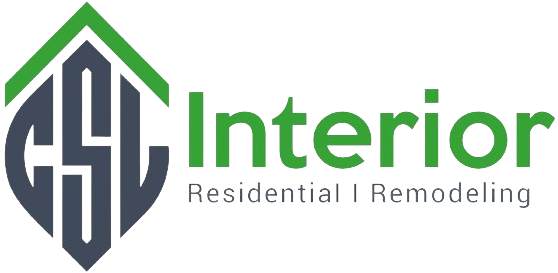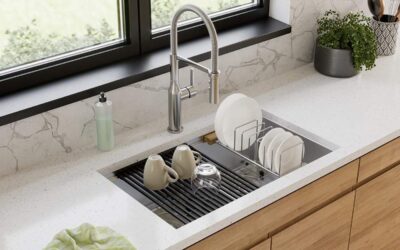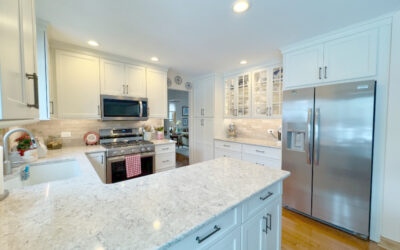Understanding Makeup Air in Kitchens: Why It’s Essential and How to Implement It
When designing or remodeling a kitchen, it’s easy to focus on the aesthetics—sleek countertops, beautiful cabinetry, and state-of-the-art appliances. However, one critical and often overlooked aspect of kitchen design is ventilation. Specifically, the concept of makeup air plays a crucial role in maintaining the safety, efficiency, and overall comfort of your kitchen. This blog explores everything you need to know about makeup air in kitchens, from why it’s important to how you can ensure your kitchen has an effective system in place.
What is Makeup Air?
At its core, makeup air is exactly what it sounds like: air that “makes up” for air removed from a space. In the context of a kitchen, makeup air is necessary to replace the air that is exhausted by your kitchen’s range hood or ventilation system.
Modern kitchen range hoods are designed to remove smoke, steam, odors, and airborne grease from the cooking area. High-powered range hoods, especially those with exhaust capacities of 400 cubic feet per minute (CFM) or more, can quickly create negative air pressure in your home. This happens because the range hood is pulling air out faster than it’s being replenished. Makeup air systems solve this problem by introducing fresh, conditioned air back into your kitchen and home.
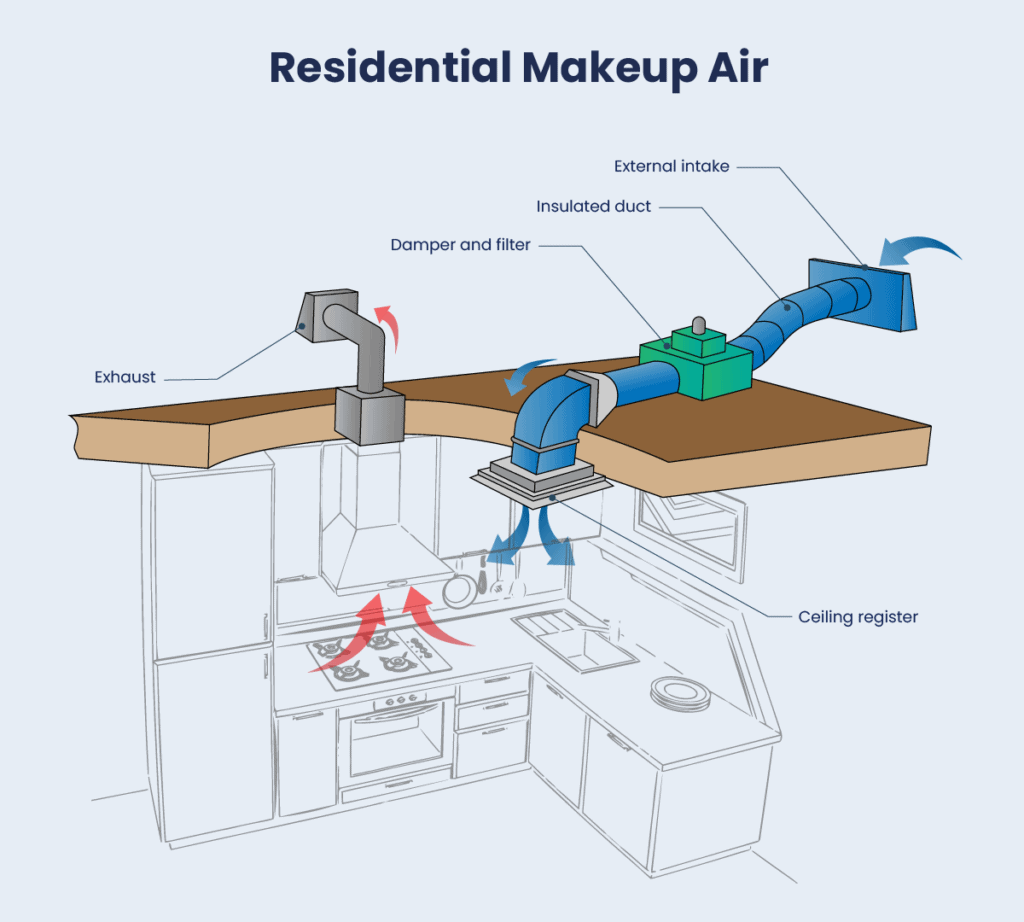
Why is Makeup Air Important in Kitchens?
1. Maintains Indoor Air Quality
Negative pressure caused by inadequate makeup air can draw in unfiltered air from less desirable places, such as crawl spaces, basements, or even through gaps in windows and doors. This unfiltered air often carries contaminants like mold spores, dust, or radon gas, which can compromise the air quality in your kitchen and home.
2. Ensures Proper Ventilation Performance
Without adequate makeup air, your range hood may struggle to perform effectively. In extreme cases, the lack of air can reduce the exhaust fan’s efficiency, allowing cooking fumes, smoke, and odors to linger in the kitchen.
3. Prevents Backdrafting
Backdrafting occurs when exhaust appliances, such as a range hood, water heater, or fireplace, pull air back into the home through chimneys or flue pipes. This can reintroduce harmful gases like carbon monoxide into your living space, posing serious health and safety risks.
4. Improves Energy Efficiency
An imbalanced air pressure system can force your HVAC system to work harder, increasing your energy bills. A proper makeup air system ensures your home’s heating and cooling systems operate efficiently.
5. Enhances Comfort
Negative air pressure can create drafts and make it harder to regulate the temperature in your home. Makeup air helps maintain a consistent and comfortable indoor environment.
How Does Makeup Air Work in Kitchens?
A makeup air system consists of a dedicated intake system that draws fresh air into your home. This system is usually integrated with your range hood to automatically provide replacement air whenever the exhaust fan is in use. Here’s how it typically works:
- Detection: A sensor or switch detects when the range hood is operating and exhausting air from the kitchen.
- Activation: The makeup air system activates, pulling in fresh air from outside.
- Filtration and Conditioning: The incoming air is filtered to remove pollutants and conditioned (heated or cooled) to match the indoor temperature.
- Distribution: The fresh air is distributed into the kitchen or adjacent spaces to balance the air pressure.
When Do You Need a Makeup Air System in Your Kitchen?
Building codes often dictate when a makeup air system is required. In most cases, makeup air is mandated for range hoods with a capacity of 400 CFM or higher. However, the specific requirements vary depending on local codes and regulations.
Here are some general scenarios where a makeup air system is necessary:
- High-Capacity Range Hoods: If your range hood has a powerful exhaust fan, it’s likely to create negative air pressure without a makeup air system.
- Tightly Sealed Homes: Modern energy-efficient homes are built to be airtight, which makes it harder for natural air infiltration to replace exhausted air.
- Multiple Exhaust Appliances: If your home has multiple exhaust systems—such as bathroom fans, dryers, or fireplaces—these can compound the negative pressure issue.
Consult your local building codes or work with a qualified contractor to determine whether a makeup air system is required for your kitchen.
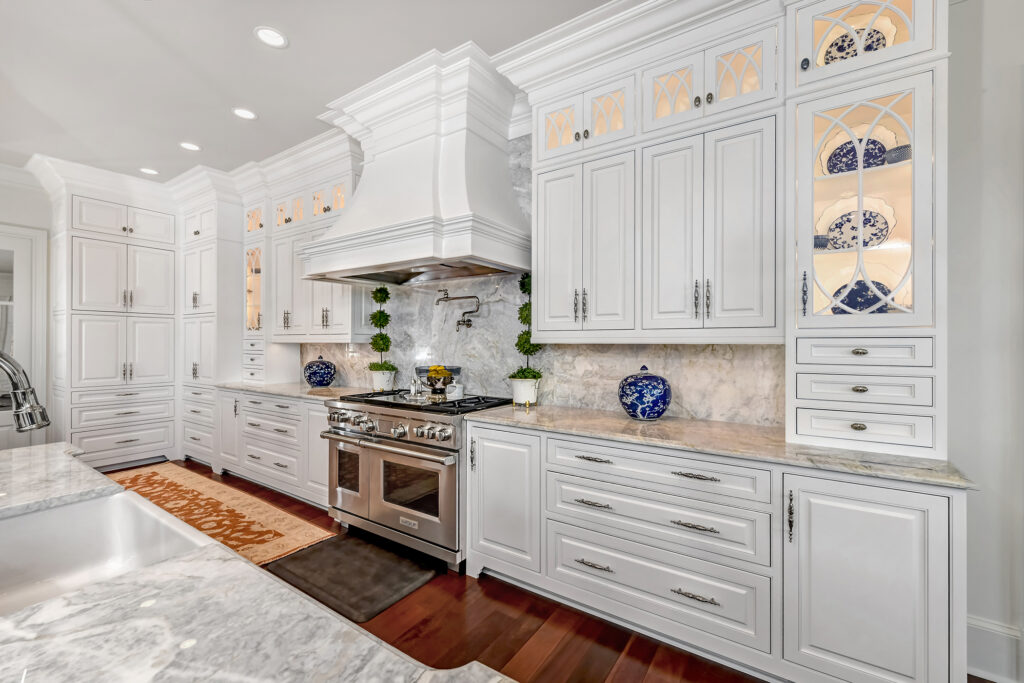
Designing a Makeup Air System for Your Kitchen
When designing a makeup air system, consider the following factors:
1. Exhaust Capacity
Determine the CFM rating of your range hood. The makeup air system should supply an equal amount of air to match the exhaust rate.
2. Home Air Tightness
In older, drafty homes, natural air infiltration may provide some makeup air. However, in newer, tightly sealed homes, a dedicated system is usually required.
3. Air Quality
Ensure the makeup air system includes high-quality filters to remove outdoor pollutants from the incoming air.
4. Integration with HVAC
Incorporating the makeup air system into your existing HVAC system can simplify installation and improve energy efficiency.
5. Compliance with Building Codes
Work with a professional contractor to ensure your makeup air system meets local building codes and standards.
Common Myths About Makeup Air in Kitchens
Myth 1: My Home is Drafty, So I Don’t Need it.
While older homes may allow some air to seep in through cracks and gaps, relying on uncontrolled air infiltration is not ideal. Unfiltered air can compromise indoor air quality and lead to uneven airflow.
Myth 2: It is Only Necessary for Commercial Kitchens.
While commercial kitchens have stringent ventilation requirements, residential kitchens with high-capacity range hoods also need makeup air to ensure safety and performance.
Myth 3: They are Expensive and Unnecessary.
The cost of a makeup air system is a worthwhile investment, as it improves indoor air quality, enhances safety, and ensures the efficient operation of your range hood and HVAC system.
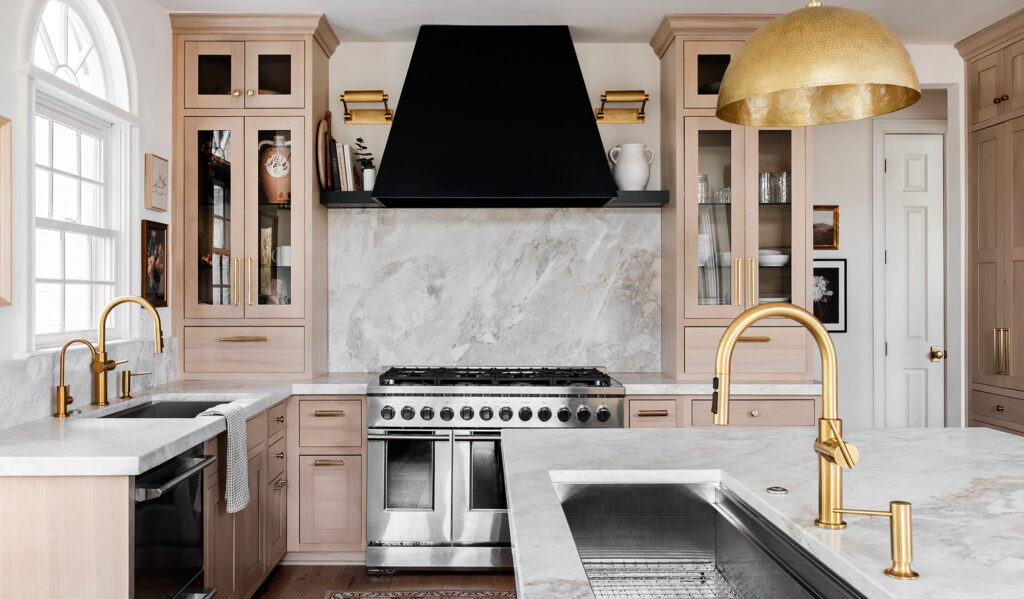
Signs Your Kitchen Needs a Makeup Air System
If you’re unsure whether your kitchen requires a makeup air system, watch for these signs:
- Difficulty exhausting cooking odors or smoke
- Drafts or whistling sounds around windows and doors
- Backdrafting from fireplaces or other appliances
- Excessive dust or poor indoor air quality
- Discomfort due to uneven heating or cooling
Final Thoughts
Makeup air may not be the most glamorous aspect of kitchen design, but it’s one of the most important. A well-designed makeup air system ensures your kitchen is safe, efficient, and comfortable while maintaining excellent indoor air quality. Whether you’re planning a kitchen remodel or simply upgrading your range hood, don’t overlook the importance of makeup air. By understanding the basics and working with a professional, you can create a kitchen that’s as functional as it is beautiful.
